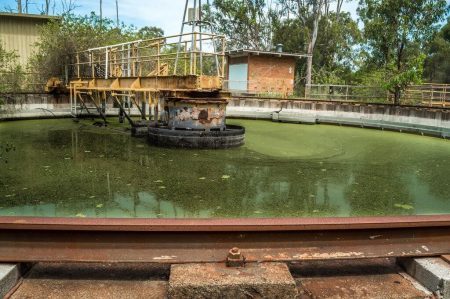Worst Waterborne Diseases
Worldwide, waterborne diseases consistently rank among the top killers each year. Here in the United States, the risk of contracting a waterborne illness is much lower, but it’s still a possibility.
What are the worst waterborne diseases common to the U.S.? The following are the worst waterborne diseases that you’re likely to encounter in the United States:
- Cryptosporidium (aka Crypto)
- Giardia
- Legionnaires’ Disease
- Hepatitis A
- Dysentery
- Cholera
Keep in mind that this article is discussing the worst waterborne diseases in the United States in its current condition, functioning electrical grid, water treatment plants, sewage systems, etc. In a grid-down situation, everything discussed here will increase exponentially, which we will discuss in a future article. The World Health Organization says that as sanitation decreases, the number of waterborne diseases increases.
[wc_toggle title=“Table of Contents” padding=“” border_width=“” class=“” layout=“box”]
The Threats
Cryptosporidium (aka Crypto)
A parasite that causes diarrhea and other intestinal problems. It is normally spread when a person drinks water contaminated with feces. Cryptosporidium is very resistant to chlorination, is difficult to filter out of water and can live for a long period of time outside of a host. In 1993, an outbreak occurred in Milwaukee leading to over 400,000 people becoming infected.
Symptoms of Cryptosporidium:
- Watery diarrhea
- Dehydration
- Lack of appetite
- Weight loss
- Stomach cramps or pain
- Fever
- Nausea
- Vomiting
Giardia
The most common intestinal parasite found in the world. In undeveloped countries, up to 25% of the population may be infected at any given time. In developed countries, around 5% of the population is thought to be infected with Giardia. It causes diarrhea, intestinal problems and has been linked to stunted growth in children. Like most other waterborne illnesses, it is spread by drinking from a water source contaminated by feces.
Symptoms of Giardia:
- Fatigue
- Nausea
- Diarrhea or Greasy Stools
- Loss of Appetite
- Vomiting
- Bloating and Abdominal Cramps
- Weight Loss
- Excessive Gas
- Headaches
- Abdominal Pain
Legionnaires’ Disease
This disease affects around 50,000 people in the U.S. every year. It can be found in nearly 40% of lakes and rivers, hot water tanks, whirlpools, and groundwater. It is contracted by the inhalation of contaminated water, and leads to respiratory complications, fever, weakness and eventually kidney failure. Legionnaires’ disease can be mistaken for pneumonia since they have similar symptoms in the early stages.
Symptoms of Legionnaires’:
2 - 10 days after exposure
- Headache
- Muscle aches
- Fever that may be 104 F (40 C) or higher
2 - 3 days later
- Cough, which might bring up mucus and sometimes blood
- Shortness of breath
- Chest pain
- Gastrointestinal symptoms, such as nausea, vomiting, and diarrhea
- Confusion or other mental changes
Hepatitis A
Hep A is found in any body of water that is contaminated with feces. It leads to fever, anorexia, and fatigue. You can tell if someone has Hep A because they will develop pale stool and dark urine. Luckily, Hep A has a vaccine and is treatable with modern medications.
Symptoms of Hepatitis A:
- Fatigue
- Sudden nausea and vomiting
- Abdominal pain or discomfort, especially on the upper right side beneath your lower ribs (by your liver)
- Clay-colored bowel movements
- Loss of appetite
- Low-grade fever
- Dark urine
- Joint pain
- Yellowing of the skin and the whites of your eyes (jaundice)
- Intense itching
Dysentery
This affects close to 140 million people worldwide, leading to an estimated 600,000 deaths. In the U.S. the number of people infected annually is only around 30,000. Dysentery affects the lining of the intestine and eventually leads to bloody diarrhea. Once again, this disease is spread by consuming water infected with contaminated feces.
Symptoms of Dysentery:
Symptoms in developed countries can be milder than in developing countries. Mild symptoms include:
- a slight stomach-ache
- cramping
- diarrhea
These normally show up in 1 - 3 days and go away in about a week.
Cholera
Cholera is a bacteria that leads to severe diarrhea and vomiting, causing dehydration that can cause death in 1 to 5 days. Symptoms occur after between 12 hours and 5 days of drinking infected water. Modern medicine and sanitation have effectively eliminated Cholera in the U.S., but new outbreaks are possible due to visitors from outside countries.
Symptoms of Cholera:
- Watery Diarrhea
- Rice-water Stools
- Fishy Odor to Stools
- Vomiting
- Rapid Heart Rate
- Loss of Skin Elasticity
- Dry Mouth
- Low Blood Pressure
- Thirst
- Muscle Cramps
- Restlessness or Irritability
- Unusual Sleepiness or Tiredness
Other symptoms that may occur, especially with more severe disease, include the following:
- Abdominal Cramping
- Rectal Pain
- Fever
- Severe Vomiting
- Dehydration
- Low or No Urine Output
- Weight Loss
- Seizures
- Shock
- Death
What is the most common water-borne illness in the United States?
Global Hydration says that Giardia is the most common water-borne disease in North America. It’s found in drinking water and recreational waters in both countries and is the most likely to infect people. Giardia is found worldwide and within every region of Canada and the United States.
Prevention of Water-borne Disease
In the U.S. we pretty much have clean water on demand. That, combined with modern sewage treatment plants, makes waterborne disease relatively rare compared to other parts of the world. This means that most Americans will only be in danger of contracting one of these diseases if they are drinking from untreated water sources or following an event such as the breakage of a sewage line.
Untreated or possibly contaminated water should be boiled if possible before being consumed. Other options are filtration with something like a Big Berky or a LifeStraw. Water treatment tablets are also available for relatively little money.
There are a whole host of good options when you’re looking for the best survival water filtration system. Make sure you read over our article before making up your mind.
By being smart about what water you drink, and ensuring that you properly disinfect or filter it, you can avoid the worst waterborne diseases in the United States.
Understanding the diseases you may face in a bug-out situation or in the event of a flood can mean the difference between life and death.
Contaminated Water
Water can be contaminated with all kinds of things, from radiation to a wide range of diseases.
What makes drinking water unsafe?
It isn’t the taste, clarity, smell, or source that makes drinking water unsafe. It’s the addition of microbes and bacteria into that water that makes it unsafe.
Poor sanitation and people using the water sources as toilets and areas to bathe are among the top culprits in undeveloped countries.
In more developed countries, like the United States, it’s much more common for water sources to be contaminated because of storms causing sewage systems to back up and problems in water treatment plants. These can introduce bacteria to the water causing people to have to boil their water or run it through filters before they drink it.
How do you know if you drank contaminated water?
You won’t always know right away if you drank contaminated water. There may not be any way to know that you drank something that you shouldn’t have until it’s too late.
The first thing that you normally experience is stomach cramping or diarrhea. Other signs to look out for are fever or fatigue.
How long after drinking contaminated water do you get sick?
The time that it takes for symptoms to set in vary depending on the disease. Some signs can show up as soon as a few hours after you drink the water, but it’s more common for them to take a day or two to show. With some diseases, you may not see any signs for up to two weeks!
What should you do if you think you drank contaminated water?
Some water-borne diseases will simply go away if you give your body enough time to fight them, while others are serious bacterial infections that need to be treated with medicine.
If you think you drank contaminated water you should seek medical attention as soon as you can. The doctors will probably run some tests to rule out or confirm the worst diseases and will start you on medication if it’s needed.
The most important thing to do is to try to stay hydrated as best as you can. Dehydration is the primary way that water-borne illnesses kill so staying hydrated is key.
During a disaster, you may not have access to a doctor. If that’s the case, then you’re going to want to try to stay as hydrated as you can. If you have access to alternate forms of antibiotics, this is a good time to consider using them.
Can Water-borne Disease Kill You
Water-bourne diseases are some of the most common and widespread diseases in the world. They also lead to death more often than you would think.
Luckily, this isn’t a huge problem in the United States and other developed countries, but it doesn’t mean that it’s impossible for water-borne diseases to start popping up in developed countries, especially during large scale disasters.
How many people die due to unclean water?
According to the World Health Organization, at least 2 billion people drink from contaminated water sources and 758 million people don’t have any access to clean drinking water.
All of this leads to the death of around 485 thousand people globally each year.
Conclusion
Even though water-borne diseases aren’t overly common in the U.S., it’s still important to be able to recognize the symptoms and understand how to treat someone with them in case of an emergency. If you ever suspect that you drank contaminated water, seek medical attention immediately!
Worst Waterborne Diseases in the U.S. (and How to Avoid Them) is available on: https://readylifestyle.com/
Worst Waterborne Diseases in the U.S. (and How to Avoid Them) published first on https://readylifesytle.tumblr.com





Comments
Post a Comment